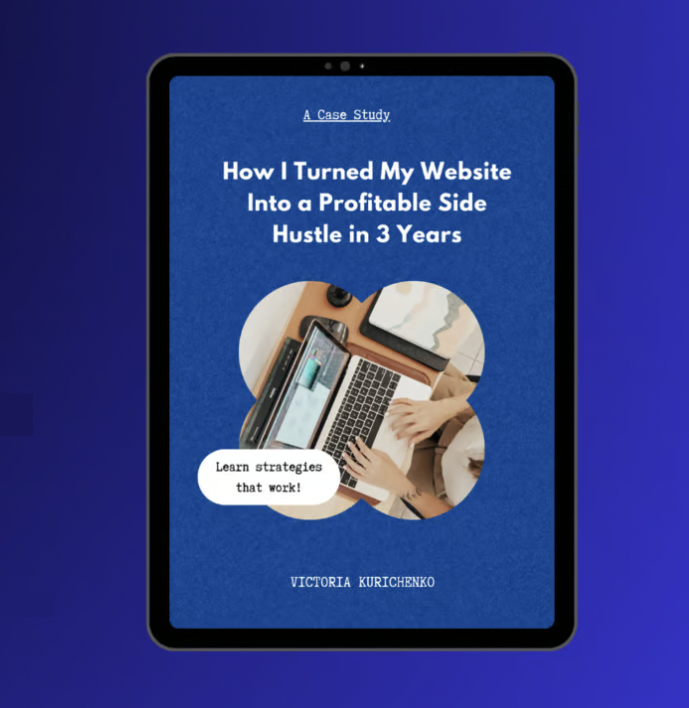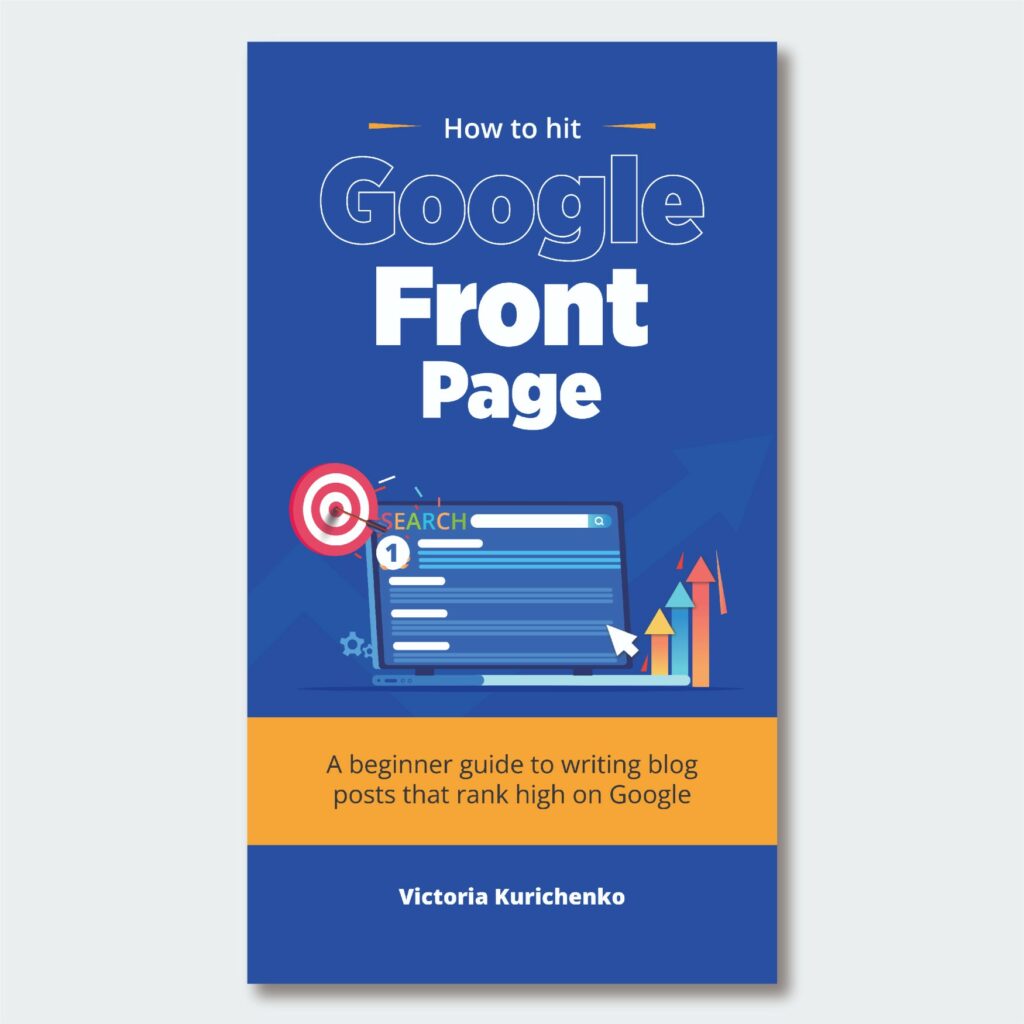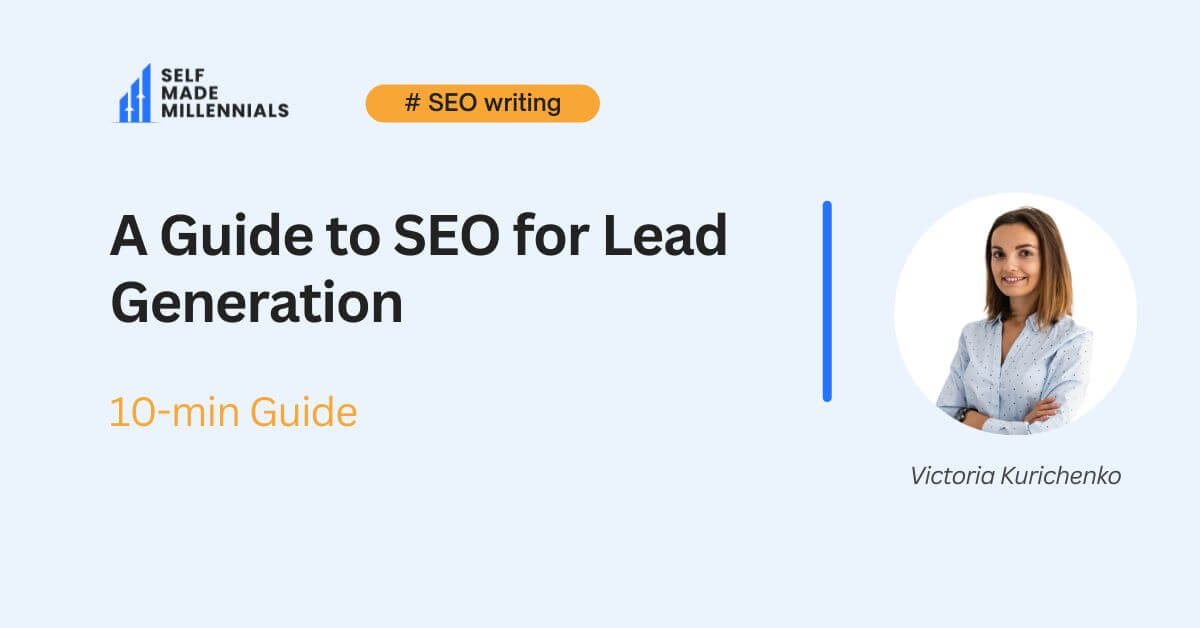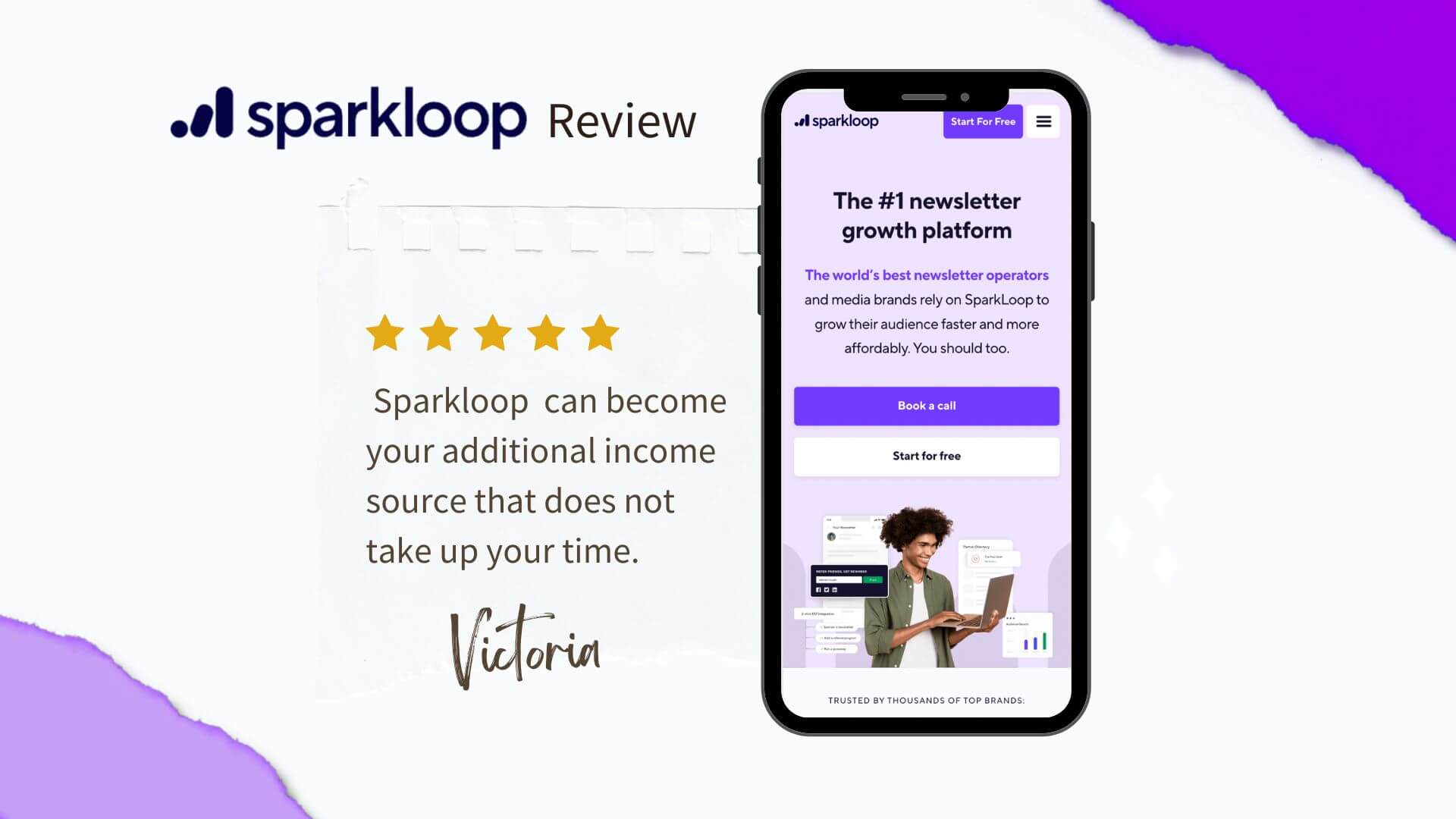As an SEO writing expert, I often hear the following complaints from my current clients and prospects:
- We want to use SEO for lead generation but do not know how.
- We struggle to implement on-page SEO.
- We publish optimized content, but we don’t get SEO leads. Why?
The former three and other challenges are what SEO specialists deal with daily.
In fact, over 68% of B2b businesses admitted lead generation is one of their biggest challenges nowadays.
Based on my experience, these are common issues. So, I created this guide on advanced SEO for lead generation to help you deal with these challenges.
If you run a B2B or a SaaS company, this guide will help you learn the following:
- What is SEO lead generation?
- Can SEO help in lead generation
- How to use SEO for lead generation
- 5 SEO lead generation services
- How to turn SEO leads into customers
What is SEO lead generation?
SEO (search engine optimization) is a way to attract the target audience to your site and generate leads (prospects) from organic search results.
SEO lead generation is a slow process that won’t yield many results at the beginning. However, consistent on-page and off-page SEO will help you create a stable traffic generation source that consistently brings new leads.
Can SEO help in lead generation?
Yes, it can!
According to Marketing Charts, almost 60% of B2B businesses said SEO has the biggest impact on their lead generation efforts.
As an SEO writing expert, I know search engine optimization can be a huge game changer for B2B and SaaS companies if done correctly.
I’ve created SEO strategies and optimized content for B2B UX agencies and a world-known SaaS company. After implementing on-page optimization strategies and consistently publishing optimized content, we’ve built a reliable traffic acquisition source that continuously brings leads from organic search results.
Based on my experience, SEO for lead generation is the most sustainable lead acquisition channel compared to PPC and social media ads.
Let me show you how you can leverage SEO for lead gen.
How to use SEO for lead generation
There are many strategies and tools for SEO lead generation.
Some SEO experts focus on building backlinks and boosting a website’s domain authority. Others, however, focus on niche keyword research and optimized content creation. I am in the former club of SEOs who research keywords with low competition and business potential, examine search intent, and create SEO strategies to help businesses attract the target audience from organic search results.
Content creation is one of the most popular SEO lead generation services nowadays. However, I recommend consulting with an SEO expert before choosing any strategy for promotion.
Below, I’ll share several proven-to-work SEO leads generation strategies.
Best SEO practices for lead generation for B2B
There are several peculiarities in how B2B businesses work. Let me list a few based on my experience:
- The cost of search ads is exceptionally high. One click can cost $30 or more.
- SEO yields the first results in at least 6 months if done correctly.
- Depending on the industry, it takes at least 1 month to convert a lead into a client.
- Considering the tight competition, the 1-2% lead-to-client conversion rate is typical for B2B companies.
- No matter what lead generation channel you invest in, the quality of leads will be different.
- SEO is the most sustainable lead generation channel that will continue bringing traffic and leads to your site even if you stop all activities.
My insights above should not surprise you if you work in the B2B industry. I’ve made all those conclusions while working on a single goal — SEO lead generation.
The following are several SEO best practices for lead generation that work.
1. Conduct niche keyword research
Niche keyword research helps you discover keywords with low competition, decent traffic, and business potential. It is an essential first step before creating and publishing content on your website.
After all, the goal is to acquire SEO leads from your content, not to attract random traffic to your website.
How to understand whether a particular keyword has potential for your business?
Answer the following questions while analyzing a keyword:
- Can this keyword bring me potential customers?
- Do I have products and services I can offer users who will visit my site through this keyword?
- Can my company solve the needs of the audience that will come to my site through this keyword?
The following are keywords with high business potential for some B2B companies:
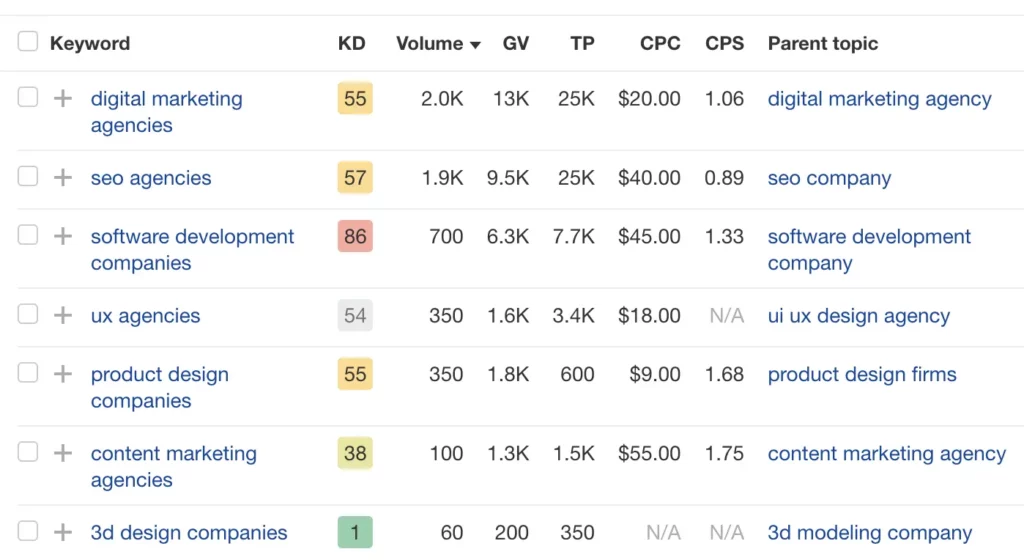


Since I’ve been working with B2B companies for over 5 years, I know some SEO keywords for lead generation.
For example, the keywords above are a few search queries of how companies worldwide might search for design, development, or manufacturing vendors online.
If you provide similar services, you might want your website to rank for these keywords on Google.
Should you need help with niche keyword research, contact me. I can help you with SEO content strategy.
2. Analyse search intent
Search intent is the “why” behind users’ search queries.
In other words, it is the reason why people type any queries into a search bar. Depending on the keyword, people might look for directions, locations, reviews, particular products or services, informational guides, checklists, and more!
What content format should you use to target your keyword?
Let’s take a “content marketing agency” keyword.
Would you create a landing page or write a blog post to target this keyword? An SEO specialist can answer this question instead of you.
Alternatively, you can analyze the top 10 ranking sites to see what Google considers the most relevant content format for this particular keyword.
Let’s look at the search engine result page.
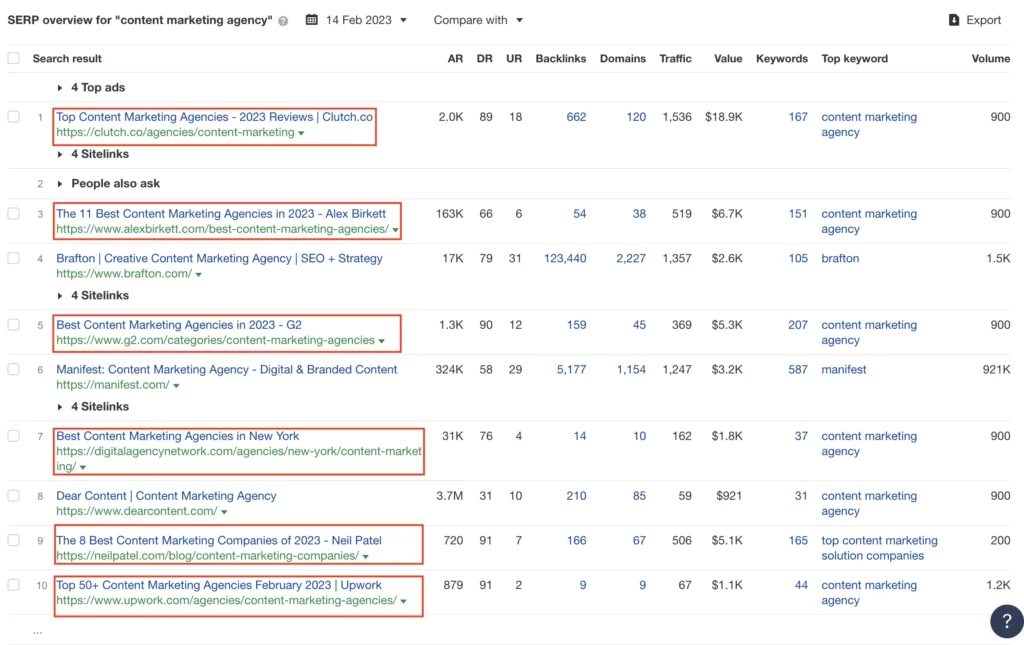


6 out of 10 sites are listicles, with much fewer backlinks than home pages ranking in the 4th and 6th positions.
This quick search intent analysis shows that people are looking for agencies to compare. Therefore, Google mainly shows listicles on top.
If you want to rank for this keyword, you must create an optimized listicle that’s better than what already ranks on the first Google search result page.
I’ve been using niche keyword research and search intent analysis to create content for B2B companies, and I know it works!
3. Write industry-related content
If you run a B2B company, you probably work with clients from different industries. Those clients usually seek B2B providers with experience in their particular industries.
For instance, trading platforms hire product design companies with in-depth expertise in fintech. Edtech companies that want to improve their conversion rates look for UX companies who have previously done similar work for edtech providers.
It’s absolutely normal.
To generate SEO leads, conduct keyword research to identify industry-specific keywords that you can later target in content writing.
Some of the popular industries to consider are healthcare, fintech, real estate, traveling, edtech, crypto, Web3, igaming, to name a few.
4. Write lengthy content
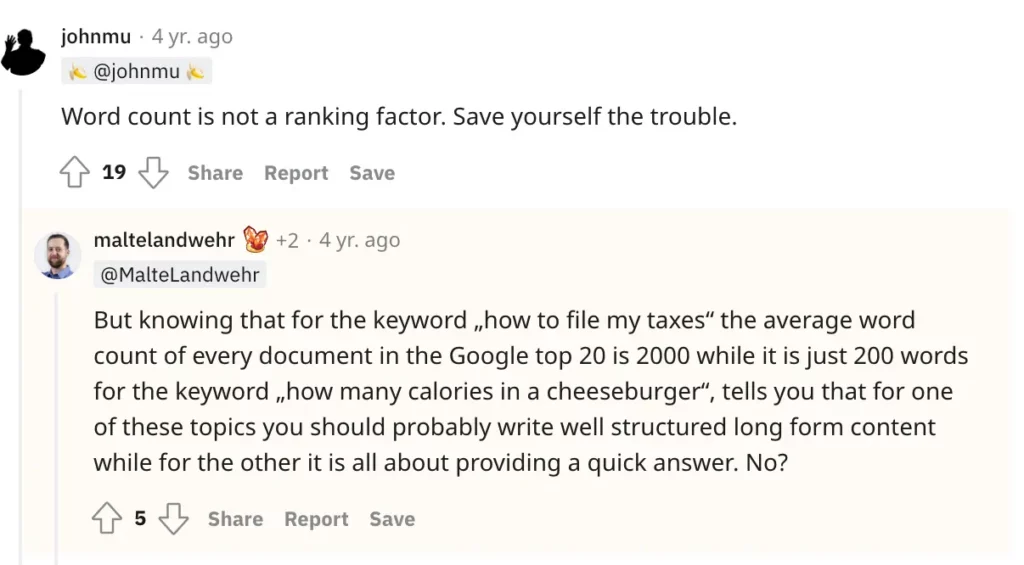


Based on my experience, I can confirm that long-form content of 2,000+ words performs better. It is easier to cover the topic and answer all-possible users’ questions in one lengthy content piece.
Considering Google’s search content quality criteria E-E-A-T which stands for Experience, Expertise, Authoritativeness, and Trustworthiness, you have a better chance to rank high with lengthy expert content.
Here is an excerpt from Google’s quality raters guideline with more information. PQ stands for page quality, while YMYL topics are Your-Money-Your-Life topics.
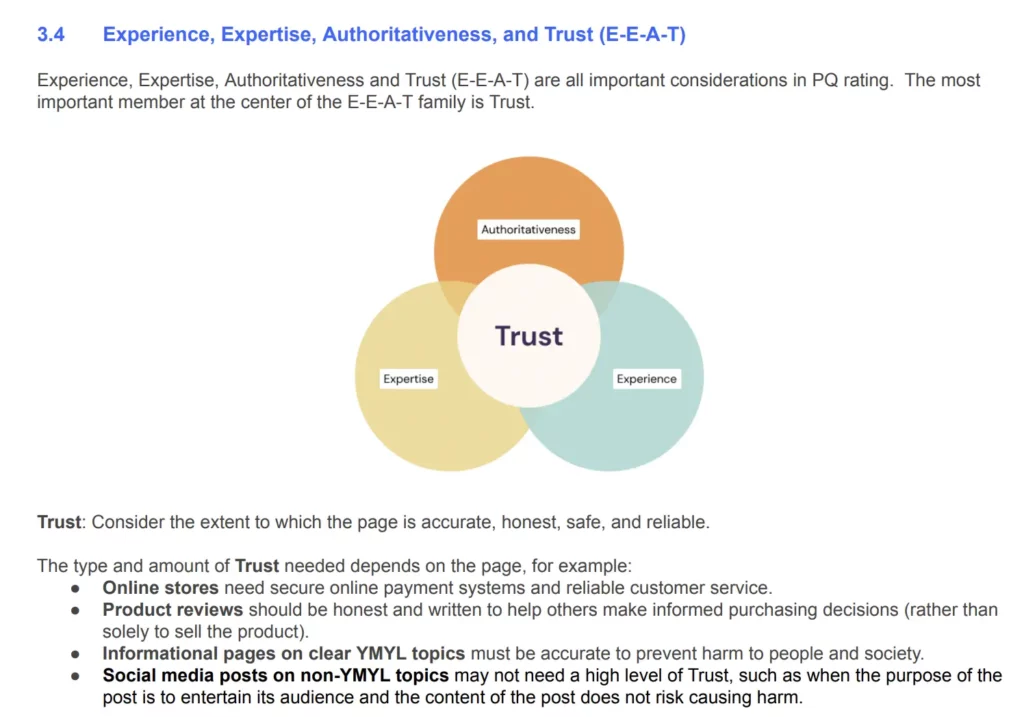


5. Regularly update old content
People like fresh content.
Even if you write content on ever-green topics, updated content still stands out among web pages one, two, or more years old.
Old content update is one of the underrated lead generation SEO strategies that work. I recommend reviewing and updating your old content that was used to bring SEO leads once a year.
Here is what you can do to give your content a second life:
- Rewrite existing content if it’s already obsolete
- Update metrics and statistics if your article is data heavy
- Add more items if your article is a listicle
- Add new keywords which your article did not rank for in the past
- Update meta title and description
Here is an example of what you can achieve if you update your old content. The screenshot below shows how the performance of the lead generation article of my B2B client changed after I completely rewrote it.
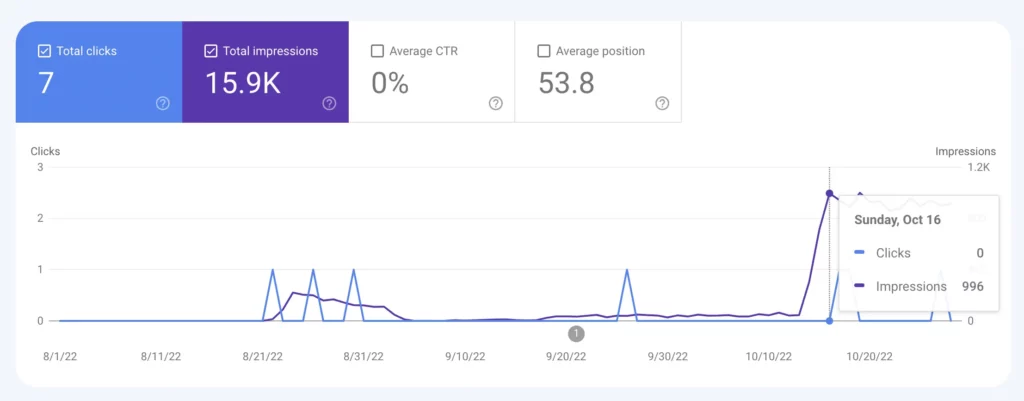


Best SEO practices for lead generation for SaaS
There are several peculiarities in how SaaS businesses work. I’ve made these implications while working as an SEO specialist at a world-known 3D modeling company.
Here they are:
- Unlike B2B, instant sales can happen in SaaS. They are based on emotional, not rational, decisions.
- Users often look for services using keywords like “alternatives,” “review,” “best,” etc.
- A user activation process is essential here because a user who created a free account might never become a paid customer.
- Unlike B2B, search ads, social media ads work for SaaS and help generate affordable leads.
- Product-led SEO lead generation strategy works well for SaaS.
I’ve read extensively about different strategies to promote SaaS products through organic search results. Hover, one particular strategy has worked extremely well.
This strategy is called Product-led SEO.
Product-led SEO is the process of content creation when you write articles on how users can solve their problems using your product.
Ahrefs has used this strategy since Tim Soulo, Ahrefs’ CMO, joined the company in 2015. Since then, Ahref’s organic traffic has grown from 30,000 to over 2 million per month.
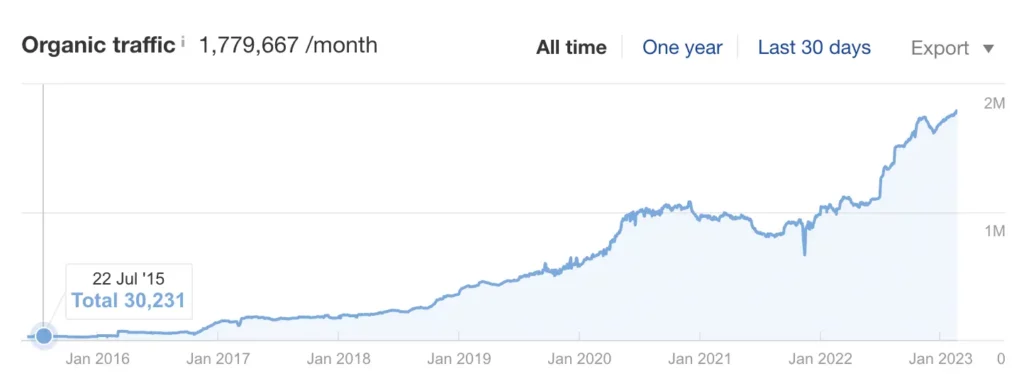


Ahrefs claims they don’t do conventional ads and discounting. Instead, their lead generation strategy heavily relies on SEO.
As we know, Ahrefs is one of the most successful SaaS companies in the field of online marketing nowadays.
I’ve tried to replicate their Product-led SEO for lead generation strategy. I admit this is the best advanced SEO for lead generation strategy any SaaS company should consider while crafting an SEO strategy.
Eli Schwartz writes an entire book on Product-led SEO. You can read a brief review in my article about SEO books.
Let me explain how you can apply the Product-led SEO strategy to boost SEO sales leads.
1. Know your product well
Do you know the pains and needs of your target audience? Do you know which challenges your product helps them to solve?
The idea is to create content where you can agitate your users’ pain points and show how effectively your product can solve them.
Why does it work?
Because people care about themselves, not you.
They are not interested in your product and its features. They want to know how it can help them make their lives easier.
Therefore, stressing out how your product can help them solve their challenges will attract people’s attention and make them care about your brand.
2. Conduct keyword research
Keyword research is an essential first step before content writing.
I won’t get tired of repeating this because I often see startups and established companies writing about random topics and complaining, “SEO for lead generation does not work.”
Therefore, spend some time collecting the most suitable keywords for your business before writing content. It will save you time and money later. Trust me.
If your website is relatively new and has a weak domain authority (lower than 30 according to Ahrefs), I recommend collecting keywords with the following metrics:
- Keyword difficulty is less than 30, according to Ahrefs (the lower, the better)
- Monthly global volume is higher than 100, according to Ahrefs (the higher, the better)
- Monthly volume in your target country is higher than 100, according to Ahrefs (the higher, the better)
- Monthly traffic potential is higher than 100, according to Ahrefs (the higher, the better)
These are the estimates.
The actual numbers will deviate. You will stumble upon situations when the traffic estimates are lower.
Considering low-traffic keywords is okay if they have business potential for your company.
Keywords with business potential will most likely bring you prospects to your website.
You are not interested in wasting time on topics that won’t help you reach your business goals. Instead, you want to use SEO for lead generation and direct marketing. Therefore, I recommend answering the following questions when prioritizing keywords:
- Can this keyword bring me potential customers?
- Does my product offer anything to users visiting my site through this keyword?
- Can my product solve the need of my audience who will visit my site through this keyword?
Prioritizing keywords with business potential will help you utilize your resources effectively.
I will share one of my marketing case studies for SaaS later in this article to help you better understand the impact of SEO on lead generation for SaaS.
So, keep reading!
3. Regularly publish optimized content
SEO lead generation does not work overnight.
You’ll have to consistently publish optimized content on your website to grow organic traffic. If you do so, you’ll see how your website’s traffic grows slowly but consistently.
Based on my experience, you will see the first results in at least 6 months if you consistently work on SEO.
Here is what you need to do:
- You need a content writing plan to know what content should be created and when.
- You need a content brief with details on how an article should be written, what keywords should be used, what format it should be, and a link to your brand’s writing style guide.
- You need a content writer (in-house or remote) to help you create content.
- You need an SEO specialist to optimize the final content piece, craft metadata, and prepare your content for publication.
- You need someone who’ll publish your article. It’s usually a content manager if you have a content creation team. Alternatively, you can do it on your own.
If you are just starting and do not have a team of experts to help you with keyword research and optimized content creation, I have the following resources you’ll find particularly helpful for these tasks.
Example of SEO lead generation for SaaS
I’ve already mentioned working as an SEO specialist at a world-known SaaS company. I’ve helped them create an SEO strategy from scratch and a content writing plan for SEO for lead generation. Furthermore, I’ve written the first article for their blog. It was not easy since I did not know the topic. However, a few weeks of research and writing helped create an in-depth content piece.
All the efforts paid off after I noticed how the article started to grow.
Here is what happens when you create optimized content for topics with business potential:
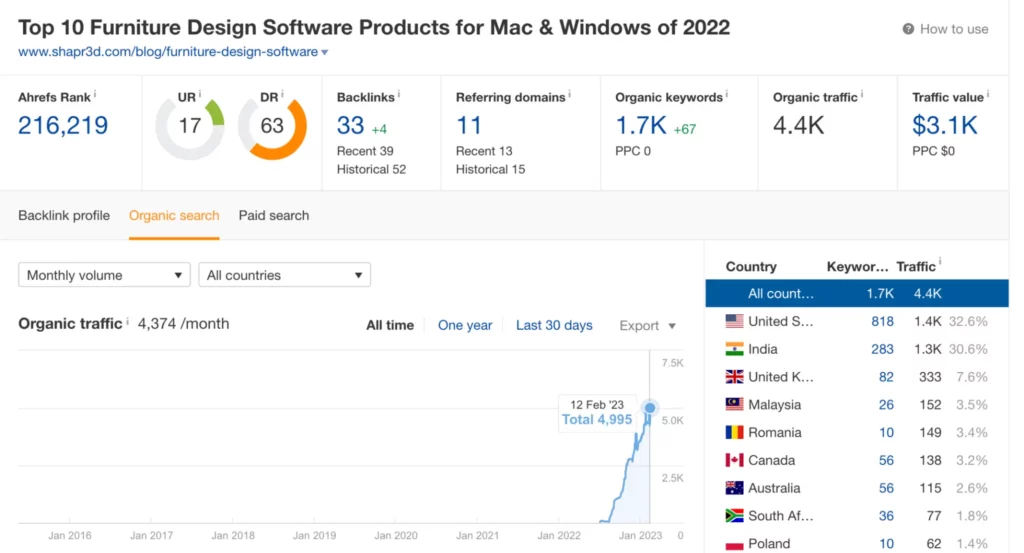


A single article went from 0 to 4,000+ monthly traffic and ranks first for over 1.7k relevant keywords.
I don’t know how many leads it generates monthly, but I’ve estimated it.
According to Capter, the visitor-to-lead conversion rate for SaaS was roughly 7% in 2021. The percentage might not be accurate nowadays, but I’ll use it for a rough estimation.
Let’s say this article brings 4,400 visitors per month (Ahrefs data).
A visitor-to-lead conversion rate is 7% (Captera data).
The SaaS company gets roughly 308 leads every month from a single article.
The quality of leads matters, and we can’t say every lead will turn into a client. However, the numbers are impressive.
This short case study shows the impact of SEO for lead generation.
Moreover, this article will continue bringing leads even if the company stops paying for ads or publishing new content.
I find it fascinating!
If you need help with SEO, contact me. Share your challenges in a few sentences, and I’ll check how I can help your business grow.
5 SEO lead generation services
I wrote this paragraph to share my favorite SEO lead generation tools. These are powerful services for keyword research and analysis, site performance analysis, and more!
I’ve listed these particular tools because I’ve used every tool and know they indeed deliver on their promises.
These tools are not cheap, though. They have free trials or a limited free version. However, some of them cost over $100 per month to use.
I also want to point out that these tools are not pure lead generation services like Leadfeeder, Marketo, or Optimonster. The tools mentioned below are used for search engine optimization and will help you with SEO for lead generation.
1. Ahrefs
Ahrefs is one of my favorite SEO lead generation tools. I’ve been using Ahrefs for over five years to grow my website and create SEO strategies for my clients. It works! I trust this tool because I see the impact of my work in terms of increased organic traffic, a growing number of SEO leads, and more.
Should you want to use Ahrefs as an SEO lead generation service, you’ll have to allocate at least $199 per month. It’s an expensive tool with a free version, but its functionality is limited. Therefore, I recommend reviewing a free tool and its features before upgrading to the free version.
I have an in-depth Ahrefs review on my website if you want to learn more about this software.
2. Semrush
Semrush is an alternative to Ahrefs, which has even more features for content marketers, including social media reports, link building reports, tools for competitive research, and more.
You can use Semrush for advanced SEO reporting and lead generation. It has a keyword research tool, on-page optimization tools, and an SEO writing assistant.
As an SEO specialist, I use a free version of Semrush, which limits the number of daily searches but is enough for quick research.
I have an in-depth Semrush review on my website if you want to learn more about this software.
3. Ubersuggest
Ubersuggest is an affordable lead generation software for lead generation for local SEO and international SEO.
Ubersugest provides actional recommendations on improving your site’s performance upon adding and verifying your domain.
I have an in-depth Ubersuggest review on my website if you want to learn more about this software.
4. CanIrank
CanIRank is an AI-powered tool for small businesses and startups.
The tool has powerful functionality, yet it’s affordable, unlike industry giants like Ahrefs or Semrush.
CanIRank can help you with the following tasks:
- Compare your web pages to competitors and define ranking improvement tips
- Evaluate if your website has a chance to rank for a particular keyword
- Find link-building opportunities
- Research SEO keywords for lead generation
- And more!
I wrote an in-depth CanIRank review if you want to learn more about this lead generation for SEO tool.
5. Moz
Moz is one of the first SEO tools on the market since 2004. You can use Moz instead of the abovementioned tools and achieve the same SEO lead generation results.
Even though Moz is an expensive tool, I regularly use its free account with 10 monthly keyword searches.
If you are looking for an SEO lead generation tool, I recommend checking Moz and deciding whether this tool suits you before paying $100+ per monthly subscription.
I have an in-depth Moz review on my website if you want to learn more about this software.
How to turn SEO leads into customers
The marketing task is to acquire leads, while the sales team’s task is to convert those leads into customers.
When the business does not have enough clients to work with, these departments often blame each other, figuring out whose fault it is. I experienced it when I worked as a marketing specialist at a B2B company.
How can you avoid this issue and turn SEO leads into customers? The following strategies have worked well for my and my clients’ businesses.
Nurture your target audience
Users who stumble upon your content are not always ready to buy from you. There are a few reasons.
First, they don’t know you and whether they can trust you.
Second, they might occasionally be browsing without the need to purchase anything.
However, if your target audience does not buy anything from you yet, it does not mean they won’t need your help in the future. Your task is to present a solution to their problem when needed.
Many use a survey to gather feedback from customers, employees, or any other relevant group. This feedback helps you identify areas for improvement, uncover problems or concerns, and make necessary adjustments to enhance satisfaction and performance.
Here is how I nurture my target audience:
- Collect the email addresses of my target audience by offering a freebie
- Grow an email list via Convertkit
- Send weekly emails with helpful information
- Run promo campaigns regularly (on Christmas, Easter, company birthday, summer sale, etc.)
Nurturing your audience helps them get to know you, your products, services, and your journey better, which leads to trust. Trust results in sales!
Create a community
You might have noticed that many brands and content creators run communities on Slack, Twitter, or Facebook, where they communicate with their target audience and let like-minded people talk to each other.
It’s done to strengthen the feeling of belonging.
People know they can get help and answers to their questions in those communities. Therefore, they turn to groups with their questions and challenges. In time, they become loyal and ready to purchase your product or service if they believe it will help them solve their problems.
Run retargeting ads
Retargeting is used to show ads to people who have visited particular pages of your website but did not make a purchase.
According to the Costello study, people who see retargeted ads are up to 70% more likely to convert. It is a proven-to-work strategy for ecommerce and SaaS.
I’ve also tried running retargeting ads for B2B companies, but they were expensive and less effective.
If you want to increase the lead-to-client ratio, I recommend trying the retargeting strategy.
Looking for an SEO expert?
I’ve been helping startups and established B2B and SaaS companies attract leads from organic search results for over 5 years.
Contact me if you are looking for a reliable SEO expert to grow your business.



Hello there!
My name is Victoria.
I am an SEO expert, Medium top writer, solopreneur, and the founder of Self Made Millennials. I help companies create optimized content and attract potential customers through organic search results. In addition, I share how content creators can monetize their writing skills.
Grab my free case study
Latest posts
Get my SEO ebook
Related blog posts
SEO writing A Guide to SEO for Lead Generation In 2024 written by Victoria Kurichenkoposted on February 23, 2023As an SEO writing expert, I often hear the following complaints from my current clients and prospects:We want to use SEO for lead generation but do not know how.We struggle to implement …
Creator tools Sparkloop Review (2024): Get Paid For Promoting Newsletters written by Victoria Kurichenko posted on September 18, 2023 If you are looking for new ways to earn money from your newsletter passively, you are in the right place. As an SEO expert and content writer, I’ve tried various creator …


